A staircase should be more than a passage between floors. The right architectural inspiration can transform spaces, encourage traffic flow and act as a creative extension of the building’s brand.
Creating something truly remarkable can be achieved through a wide variety of design options including the use of structured or organic shapes. Executed correctly, a staircase engages with its audience wherever it is installed. It inspires employees in commercial lobbies, draws more guests into public venues and connects shoppers with retail brands. By choosing to enhance the design aesthetics of a space, you will dramatically impact the way that the space is experienced and appreciated.
Types of Stairs:
Curved
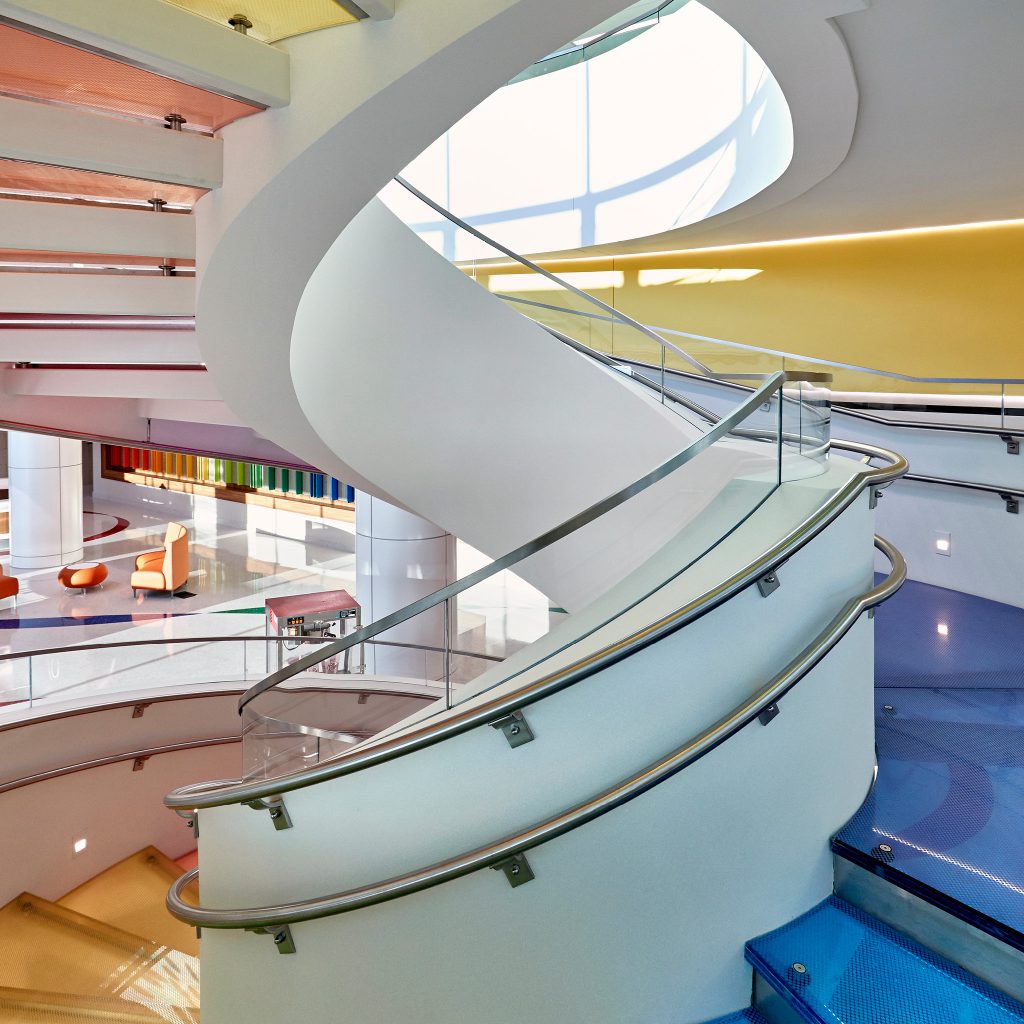
The gentle flow of curved stairs lends warmth and beauty to any space. When developing your design, keep in mind that the minimum inside radius of a stair is often not less than twice the stair width. Stringers should be hollow structural sections (HSS) or metal plates. Also keep in mind the potential of smaller elements, such as connection types (bolts, welds, seamless) to finish the design.
Straight
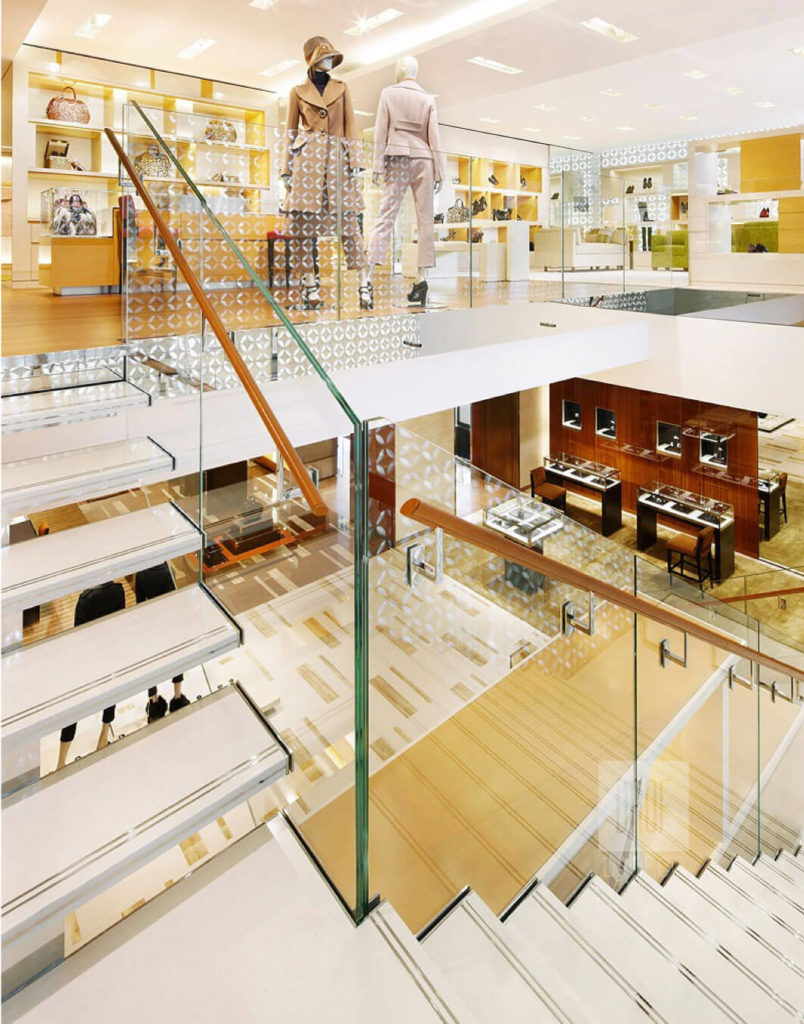
Modern, classic, or avant-garde, a world of possibilities invites designers to let their imagination soar when developing straight stairs. Consider crafting something daring with unique stringer types, supporting methods, finishes, materials and connection options.
Single Stringer
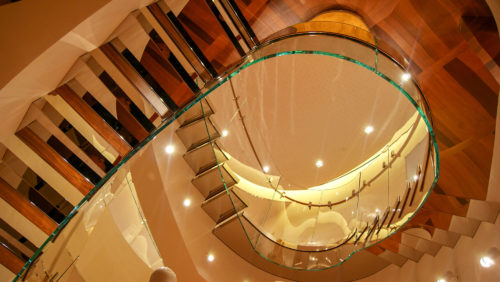
This clean, modern stair type allows for a beautiful and simplistic design suited for treads of wood, metal plates and even coloured glass – all of which can result in sleek curves or sharp corners. Railings of clear glass and wire are frequently popular on single stringers. Be mindful of the increased risk of deflection at the edges of each stringer, and consider how this can be managed through materials, railings or tread thickness.
Double Stringer
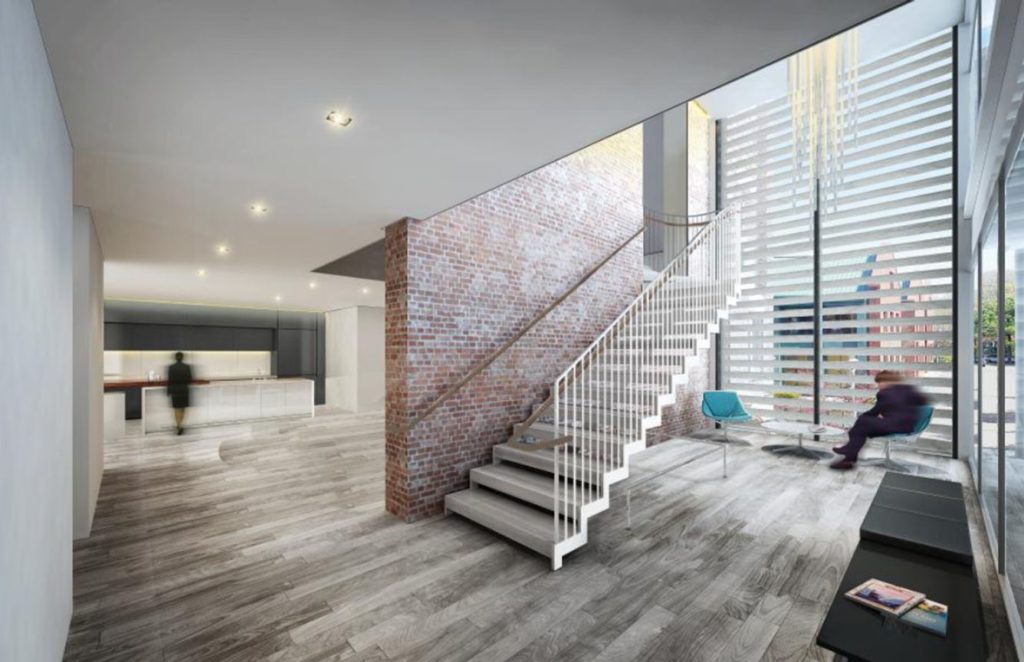
Whether the stringers connect below or beside the stairs, this often-heavier-looking stair reduces the issue of deflection and can be a more cost-effective option than a single stringer. With increased support comes increased versatility, allowing a wide range of materials to be used for tread and handrail styles.
Self-Supported
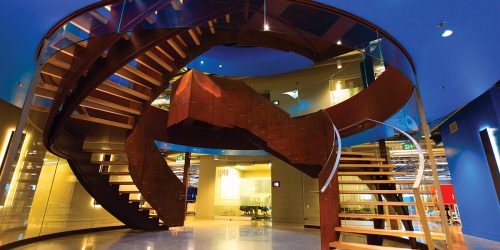
Complex in design, yet stunningly simple in style, these stairs incorporate illusory supports, often hidden within the framework, to provide stability. There are as many styles of self-supported stairs as your imagination can conjure.
Cable Supported
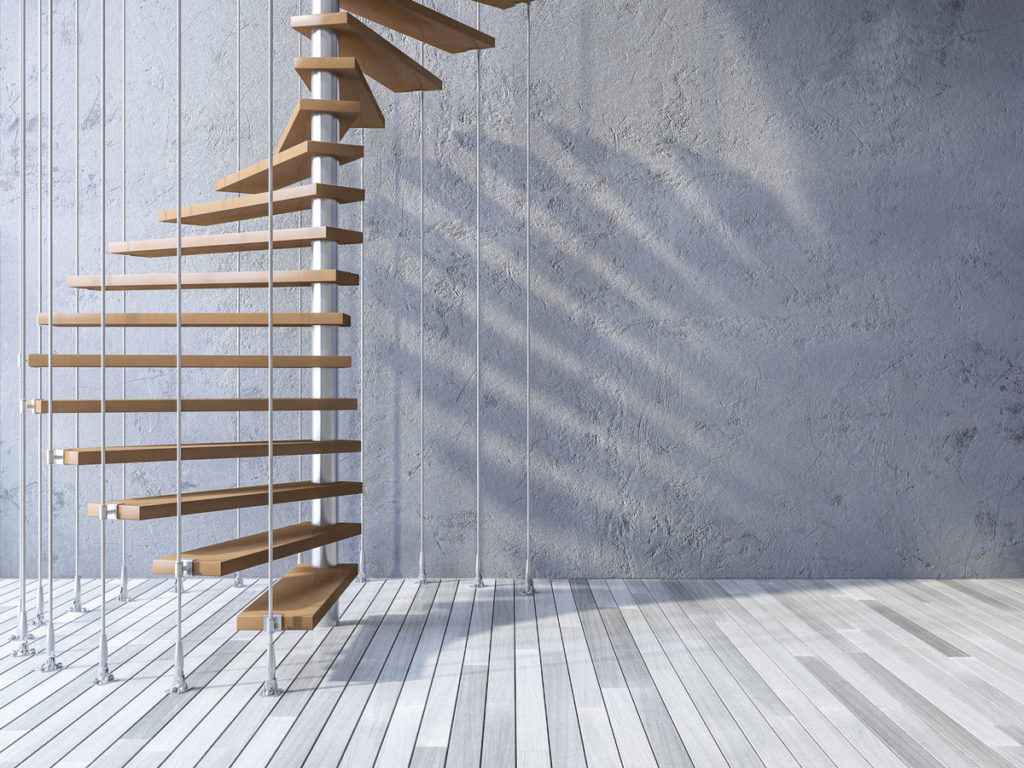
Often used as guardrails to give an airy, floating effect, cable-supported stair design should account for the width of the treads, as well as the thickness and placement of cables to control deflection.
